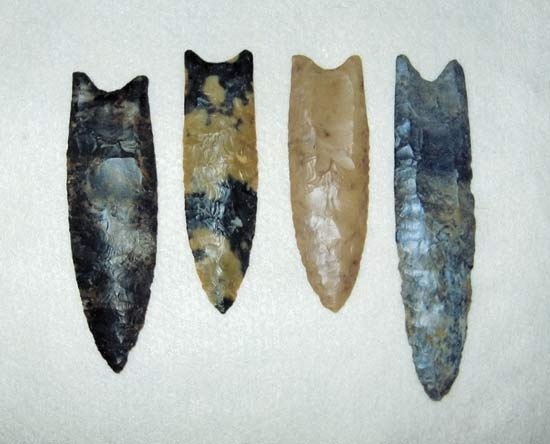Big-Game Hunting Tradition
ancient North American cultures
 any of several ancient North American cultures (Native American) that hunted large herd animals such as mammoth and bison. The archetypal cultures of the Big-Game Hunting Tradition are the Clovis (Clovis complex) and Folsom complexes (Folsom complex), the remains of which have been found throughout North America and date, respectively, to approximately 9,500/9,050–8,850/8,800 BCE and 9,000–8,000 BCE. The tradition ended with the extinction of the Pleistocene megafauna. Although human predation contributed to these extinctions, habitat destruction was the driving force—between about 40,000 and 6,000 years ago, for instance, climate change caused the elimination of an estimated 90 percent of all mammoth habitat in North America. The tradition was followed by the rise of various Archaic cultures (Archaic culture).
any of several ancient North American cultures (Native American) that hunted large herd animals such as mammoth and bison. The archetypal cultures of the Big-Game Hunting Tradition are the Clovis (Clovis complex) and Folsom complexes (Folsom complex), the remains of which have been found throughout North America and date, respectively, to approximately 9,500/9,050–8,850/8,800 BCE and 9,000–8,000 BCE. The tradition ended with the extinction of the Pleistocene megafauna. Although human predation contributed to these extinctions, habitat destruction was the driving force—between about 40,000 and 6,000 years ago, for instance, climate change caused the elimination of an estimated 90 percent of all mammoth habitat in North America. The tradition was followed by the rise of various Archaic cultures (Archaic culture).During the 20th century, most archaeologists characterized the cultures of the Big-Game Hunting Tradition as relying on large prey more or less to the exclusion of other subsistence resources. Research in the early 21st century, however, has indicated that many of these peoples engaged in foraging practices that were quite diverse; notable sites supporting this hypothesis include Gault (Texas) and Jake Bluff (Oklahoma).
- Christopher Dock
- Christopher Dresser
- Christopher Fry
- Christopher Gist
- Christopher G Memminger
- Christopher Hansteen
- Christopher Hinton, Baron Hinton
- Christopher Hinton Hinton, Baron
- Christopher III
- Christopher Isherwood
- Christopher Latham Sholes
- Christopher Logue
- Christopher Marlowe
- Christopher Morley
- Christopher Okigbo
- Christopher Plummer
- Christopher, Saint
- Christopher Simpson
- Christopher Smart
- Christopher Sower
- Christopher Tye
- Christoph Graupner
- Christoph Martin Wieland
- Christophorus Buys Ballot
- Christoph Willibald Gluck